Time:2025-07-15
The Imperative of Weather-Resistant Neon Signage in Moist Environments
In regions characterized by frequent rainfall, high humidity, or coastal conditions, durable waterproof neon signage has emerged as a critical asset for businesses seeking to maintain visibility and brand integrity. These specialized signs are engineered to withstand relentless moisture, wind-driven rain, and temperature fluctuations, while delivering the iconic glow of neon lighting that attracts customers even in the harshest weather. From bustling urban storefronts in monsoon-prone cities to beachside resorts battling salt-laden air, waterproof neon signage combines technical innovation with aesthetic appeal, ensuring businesses remain visible and operational year-round. This article explores the technical foundations, design principles, and strategic applications of such signage, offering a comprehensive guide for retailers, architects, and signage professionals operating in rainy climates.
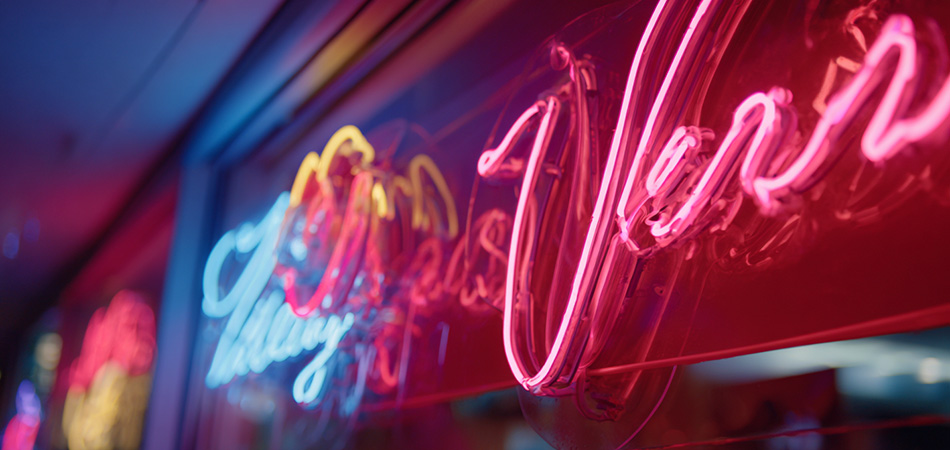
Technical Foundations: Engineering for Moisture Resistance
Understanding Waterproofing Standards: IP Ratings Explained
The Ingress Protection (IP) rating is the gold standard for measuring a sign’s resistance to water and dust. For rainy climates, two ratings are particularly critical:
IP65: Protected against low-pressure water jets from any direction (e.g., rain, sprinklers), ideal for covered outdoor areas or locations with moderate rainfall.
IP67: Resistant to temporary submersion in water up to 1 meter deep for 30 minutes, suitable for fully exposed locations, coastal zones, or areas prone to flooding.
Core Components of Waterproof Neon Systems
Sealing and Encapsulation Technologies
Silicone Overmolding: High-grade, UV-stabilized silicone (1.5–2mm thickness) fully encapsulates LED neon flex, creating a seamless barrier against water, dust, and UV radiation. This material retains flexibility for complex shapes while resisting degradation from prolonged moisture exposure.
PVC Sheathing with Gasket Seals: For cost-effective solutions, PVC casings with EPDM rubber gaskets and heat-shrink connectors block water at electrical junctions. These are often used in semi-exposed areas, paired with IP65-rated coatings to enhance durability.
Conformal-Coated Circuit Boards: A thin polymer layer on PCBs protects against moisture and corrosion, essential for coastal environments where salt spray can degrade unprotected electronics.
LED Neon Flex: The Workhorse of Wet Environments
Durability Advantages: Unlike traditional glass neon, LED neon flex is shatterproof and resistant to impact, making it ideal for windy, rainy conditions. Its low-voltage operation (12V/24V DC) reduces electrical hazards in wet environments.
Color and Light Consistency: Surface-mounted LEDs in waterproof casings deliver vibrant, uniform illumination, with RGB/RGBW capabilities to match brand colors while maintaining light output even when wet.
Power and Control Systems
Waterproof Power Supplies: Enclosed in IP67-rated junction boxes, power supplies are designed to withstand direct rain and humidity, with surge protection to guard against voltage spikes during storms.
Smart Controllers: Wi-Fi/Bluetooth modules in waterproof enclosures allow remote adjustment of brightness and lighting effects, ensuring visibility in low-light conditions without exposing controls to moisture.
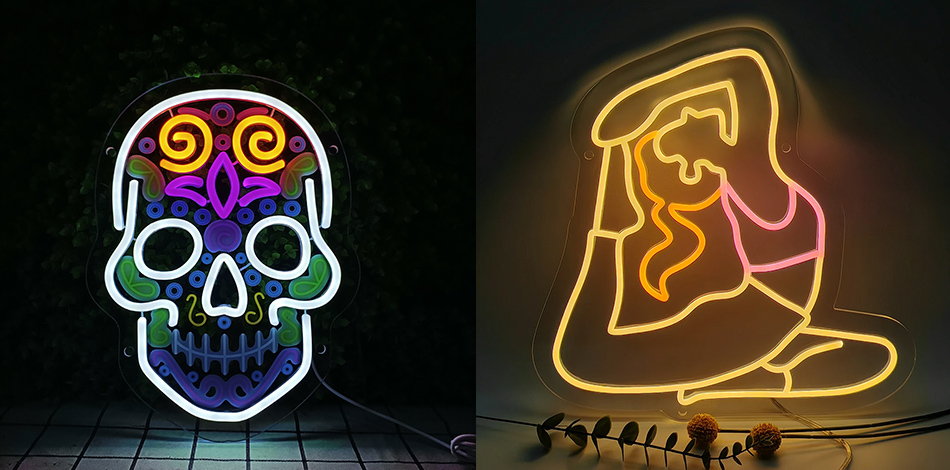
Design Principles for Rain-Resistant Neon Signage
Material Selection for Longevity
Corrosion-Resistant Frames:
Stainless Steel: Ideal for coastal areas, resisting salt corrosion and maintaining structural integrity.
Aluminum with Powder Coating: Lightweight and rust-resistant, suitable for urban rainy climates, with finishes that complement the sign’s aesthetic.
Backing Materials:
Frosted Acrylic: Diffuses light evenly while resisting water absorption, commonly used for indoor wet zones like spas or pool areas.
Composite Panels: High-density polyethylene (HDPE) or recycled plastic composites, offering waterproofing and UV resistance for outdoor backings.
Structural Design to Combat Moisture
Sloped Surfaces: Angled sign frames and casings direct rainwater away from electrical components, minimizing pooling and water ingress.
Hidden Drainage Channels: Integrated channels within the sign structure allow water to escape harmlessly, a critical feature for large-scale outdoor installations.
Raised Mounting: Elevating signs 2–3cm from the mounting surface creates an air gap, reducing direct contact with wall moisture and promoting airflow for drying.
Optical Performance in Wet Conditions
Anti-Reflective Coatings: Applied to silicone or PVC casings to reduce glare from rain droplets, ensuring text and graphics remain legible even in downpours.
Brightness Optimization: Using light sensors to auto-adjust LED output, maintaining visibility in low-light rainy days without excessive energy use.
Color Contrast Strategies: High-contrast color pairs (e.g., yellow neon on dark backgrounds) cut through gray skies and wet surfaces, enhancing readability in gloomy weather.
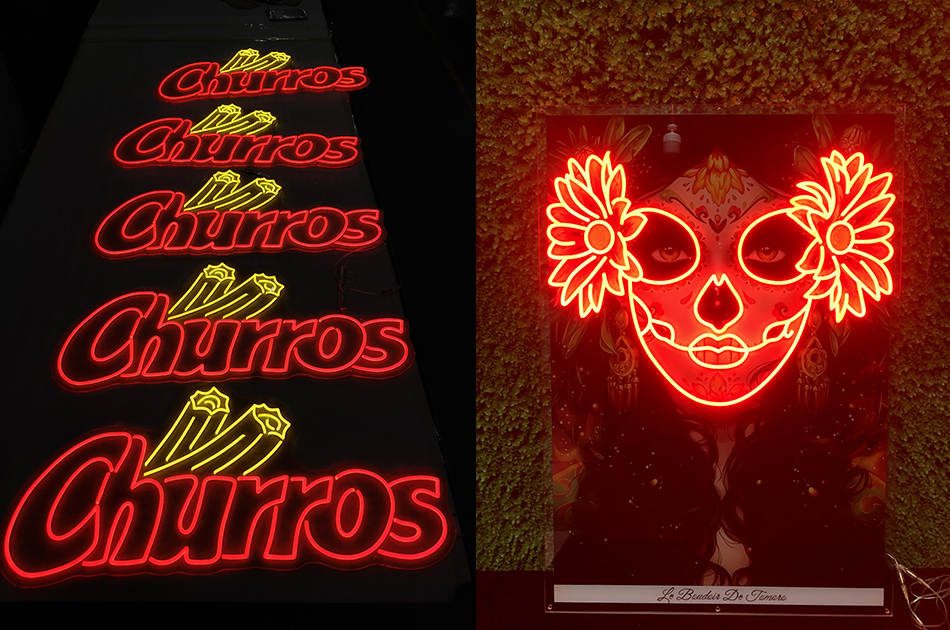
Strategic Applications in Rainy Climates
Outdoor Signage: Braving the Elements
Retail and Hospitality Frontages
Storefronts in Monsoon Zones: A boutique in a tropical city might use an IP67-rated neon logo with sloped stainless steel framing, ensuring the sign remains vibrant during heavy rains. The sign’s controller adjusts brightness based on ambient light, maintaining visibility through overcast skies.
Coastal Restaurants: A beachside eatery employs salt-resistant aluminum frames and silicone-encased neon to withstand salt spray, with a time display module that highlights operating hours in weatherproof LED text, ensuring tourists can easily find the venue even in stormy conditions.
Transportation Hubs and Urban Wayfinding
Bus Stops and Transit Terminals: Waterproof neon signs guiding passengers to exits or services, using durable PVC sheathing and anti-corrosive coatings to endure constant exposure to rain and cleaning chemicals.
Parking Garages: Neon signs indicating “ENTRANCE” or “空位” (vacancy) in waterproof casings, resisting moisture from car washes and rainwater runoff.
Indoor Wet Zones: Moisture-Resistant Elegance
Spa and Wellness Centers
Steam Rooms and Saunas: IP66-rated neon signs displaying “RELAX” or service menus, with heat-resistant silicone casings that withstand high humidity without fogging or electrical failure.
Swimming Pool Areas: Underwater-rated (IP68) neon markers for pool depths or safety instructions, though rare, these specialized signs use fully sealed LED modules for submerged applications.
Bath and Beauty Retail
Cosmetic Stores in Humid Markets: Neon signs in 试妆区 (makeup testing areas) with waterproof backing to resist splashes from sinks or product demonstrations, using cool-white LED neon to enhance product visibility.
Temporary and Mobile Applications
Pop-Up Events in Rainy Seasons
Outdoor Festivals: Portable neon signage with quick-mount waterproof brackets, ideal for food stalls or information booths at music festivals, where sudden downpours are common. The signs use battery-powered LED neon for mobility, with IP65 ratings to survive wet grass and splashes.
Mobile Food Trucks: Waterproof neon menus mounted on vehicle exteriors, with flexible silicone casings that endure vibrations and rain during transit, ensuring the truck’s offerings are visible even in stormy weather.
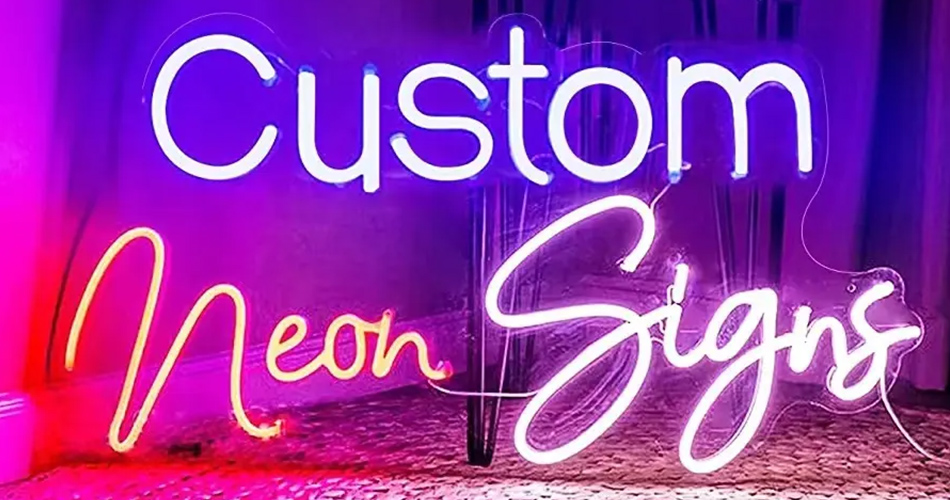
Installation and Maintenance Best Practices
Professional Installation: Sealing the Deal with Expertise
Site-Specific Preparations:
Weather Mapping: Assess annual rainfall, humidity levels, and wind directions to determine the appropriate IP rating and mounting strategy (e.g., additional wind bracing for coastal signs).
Electrical Precautions: Use GFCI (ground-fault circuit interrupters) for outdoor installations, reducing the risk of electric shock in wet conditions.
Mounting Techniques:
Outdoor Signs: Stainless steel brackets with rubber gaskets to create a watertight seal between the sign and the wall, paired with countersunk screws to prevent water pooling.
Glass/Mirror Mounts: Transparent waterproof adhesives for signs mounted on storefront glass, ensuring no visible hardware disrupts the design.
Routine Maintenance: Sustaining Performance Over Time
Cleaning Protocols:
Monthly Wipe-Down: Use soft microfiber cloths and mild, non-abrasive cleaners to remove dirt and mineral deposits from silicone/PVC casings, avoiding harsh chemicals that degrade waterproof coatings.
Annual Deep Clean: For coastal signs, rinse with fresh water to remove salt buildup, followed by a gentle scrub with a soft brush to prevent corrosion on metal frames.
Seal Inspection:
Quarterly Checks: Inspect gaskets, connectors, and seals for cracks or wear, replacing damaged components promptly to maintain IP ratings.
Lubrication: Apply silicone grease to movable parts (e.g., hinge-mounted sign panels) to prevent rust and ensure smooth operation in humid environments.
Electrical System Maintenance:
Biannual Power Checks: Test waterproof power supplies and controllers for voltage stability, replacing batteries in backup systems to ensure uninterrupted operation during outages.
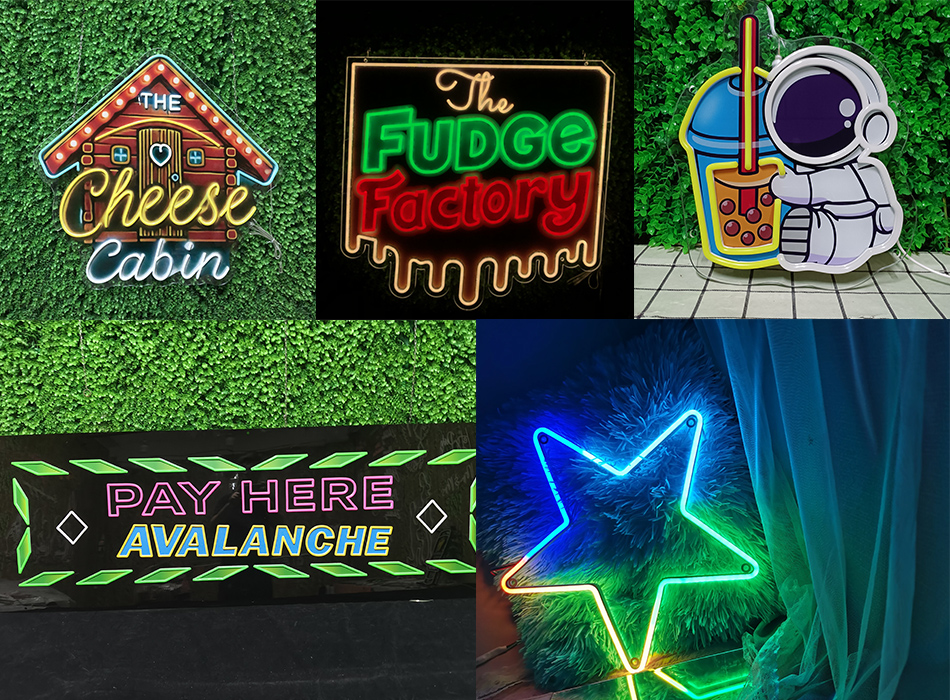
Key Considerations When Selecting Waterproof Neon Signage
Certification and Compliance
Third-Party Testing: Look for signs with IEC 60529 certification for stated IP ratings, especially for outdoor applications where non-compliant products may fail prematurely.
Regional Standards: Ensure compliance with local codes (e.g., UL 1598 for wet locations in the US, CE EN 60598-2-22 in Europe) to avoid regulatory issues and insurance complications.
Supplier Expertise
Weather Testing Portfolio: Choose manufacturers with case studies in rainy or coastal environments, demonstrating their ability to engineer signs that withstand prolonged moisture and temperature swings.
Material Traceability: Prioritize suppliers offering detailed specs on silicone/LED durability, such as UV resistance testing results (e.g., 5,000+ hours of exposure without color fade).
Customization for Climate Needs
Design Flexibility: Work with designers to integrate climate-specific features, such as built-in dehumidifiers for enclosed signs in extremely humid regions or heated panels to prevent ice formation in cold, rainy climates.
Modular Components: Opt for signs with replaceable neon segments or controller modules, allowing easy maintenance without dismantling the entire structure, a crucial feature for large-scale installations.
Budget and Lifespan Planning
Long-Term Cost Analysis: While IP67-rated signs may have higher upfront costs, their lifespan (5–7 years for outdoor use) and reduced maintenance needs offer better ROI than cheaper, non-waterproof alternatives that degrade within 2–3 years in wet environments.
Warranty Coverage: Seek suppliers offering 3–5-year warranties on waterproof seals and LED performance, with clear terms for replacing components damaged by moisture intrusion.
Innovations in Waterproof Neon Technology
Advanced Material Innovations
Self-Healing Silicone: Emerging formulations with nanotechnology that repair micro-cracks caused by UV exposure or impact, extending the waterproof lifespan by up to 30%.
Bio-Based Polymers: Recycled ocean plastic-based PVC casings, combining sustainability with moisture resistance, ideal for eco-conscious businesses in coastal areas.
Smart Waterproof Systems
AI-Enhanced Humidity Control: Sensors that detect high moisture levels and auto-activate internal fans or heaters to prevent condensation buildup inside the sign, a game-changer for enclosed neon installations.
Satellite Time Sync: GPS-enabled controllers that maintain accurate time displays even in remote rainy regions, ensuring consistent business hours visibility without relying on unstable local networks.
Aesthetic Advancements
Transparent Waterproof Displays: OLED technology embedded in fully sealed casings, allowing neon signs to blend with glass facades while displaying dynamic content, perfect for luxury stores in rainy urban centers.
Camouflage Design: Signs with texture-matched casings (e.g., brick-patterned silicone) that blend with building exteriors, maintaining waterproofing while enhancing architectural harmony.
Overcoming Unique Challenges in Rainy Climates
Challenge 1: Mold and Mildew Growth
Solution: Incorporate antimicrobial additives in silicone casings and backings, paired with breathable vents that allow airflow without compromising waterproofing, reducing moisture traps where mold thrives.
Challenge 2: Salt Corrosion in Coastal Areas
Solution: Use electroless nickel-plated connectors and marine-grade stainless steel frames, combined with quarterly freshwater rinses to remove salt deposits, ensuring electrical components remain functional.
Challenge 3: Reduced Visibility in Low-Light Rain
Solution: Deploy adaptive brightness algorithms that increase LED output during overcast conditions, paired with anti-glare coatings to cut through rain-induced reflections, maintaining legibility at all times.
Challenge 4: Water Ingress Through Wiring
Solution: Route cables through elevated conduits (at least 30cm above ground) and use waterproof cable glands at entry points, ensuring water flows away from the sign’s interior.
Conclusion: Waterproof Neon as a Climate-Resilient Asset
Durable waterproof neon signage is no longer a luxury but a necessity for businesses operating in rainy, humid, or coastal environments. By combining robust engineering with innovative design, these signs defy the elements while delivering the timeless appeal of neon lighting, ensuring brands remain visible and vibrant regardless of weather challenges.
As climate patterns evolve and consumer expectations for consistent brand experiences grow, investing in waterproof neon signage becomes a strategic decision—one that balances durability, aesthetics, and functionality. By prioritizing certified suppliers, climate-specific designs, and proactive maintenance, businesses can transform their signage into a resilient asset that not only withstands the rain but also shines as a symbol of reliability and adaptability. In regions where weather threatens visibility, waterproof neon signage stands as a testament to innovation, proving that even in the wettest climates, light—and business—can endure.